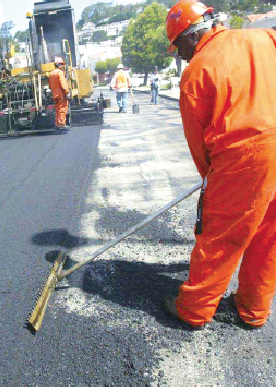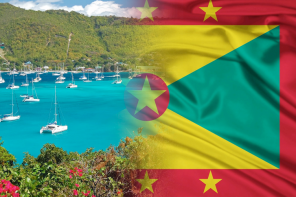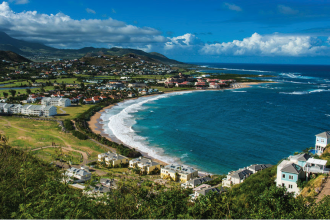T
he Department of Infrastructure, Ports and Energy in Saint Lucia launched its Road Maintenance Management System (RMMS) in early May.
The Road Maintenance Management System will ensure standardized maintenance work where cost is defined based on economic indicators. The aim is to allow for preventative maintenance planning as opposed to reactive maintenance.
Minister for Infrastructure, Ports, Energy and Labour, Stephenson King, said he welcomes the project as a defining moment for the ministry and citizens alike.
“(This project) signals government’s commitment to the comprehensive and strategic development of our country’s infrastructure in support of social and economic development,” King said. “The Road Maintenance Management System and Road Asset Management System will play a major role in improving the island’s aging road assets and save the taxpayers of this country resources.”
“This system is a collection of software tools which will provide us policymakers with an inventory of the country’s infrastructure assets and a comprehensive snapshot to guide investments in upgrades and routine maintenance,” King added.
Benefits from the new project include:
• Credible, centralized, secured and readily accessible data
• Improved maintenance decisions
• A 15% cost savings in maintenance
• A 10% lower road user cost and general enhancement in road safety
Through competitive bidding, Sirway Limited, a firm from Finland, has been contracted to provide consultancy on the new project and will work alongside ministry officials towards delivering on the following objectives:
• To provide a sustainable source of relevant and valid information for managing the road network through a system of strategic monitoring and a road maintenance database
• To enhance the programming and budgeting of periodic maintenance and rehabilitation of roads using an economic efficiency criteria
• To reduce economic challenges posed by natural disasters and climate change by using risk assessment data to prioritize public spending on infrastructure.
King said Sirway Limited has already began its work and that upon completion of the company’s assessment, government will proceed to implement the recommendations made and activate the RMMS.
According to Permanent Secretary in the Ministry of Infrastructure, Ports and Energy, Ivor Daniel, close to half a billion dollars will be needed to repair the poor state of the nation’s road network over the next four years.
However, Daniel said government has for the past two years increased its allocation towards improving the island’s road network, the aim being making prevention the rule in curing the nation’s road network woes. Daniel was upbeat that the new project is a step in the right direction.
“This system is transformational, this system is a game-changer (and) is expected to transform our culture in this Department,” Daniel said. “Inadequate investment in routine maintenance and periodic maintenance has led to significant deterioration of Saint Lucia’s road network over the years.
“In addition to the frequency of bad weather conditions due to the impacts of climate change, this has further exacerbated the condition of our roads and created greater challenges for the Department.” ¤
In order to mitigate that trend, Daniel said it was imperative that government invested heavily into the island’s road network maintenance programme. He said the Ministry has determined that nearly $450 million is needed to help stem the deterioration of the road network over the next four years. He said Prime Minister Allen Chastanet has signaled government’s commitment to ensuring that the resources and support are provided to realize that goal.
Daniel said the programme will also result in a more cost-effective and comprehensive method by which Ministry officials can manage a road network that is becoming increasingly populated by an estimated 3,600 additional vehicles each year.
“The RMMS will provide scientific analysis and methods for preventative maintenance and planning of our infrastructure and maintenance works. Instead of having this reactive approach to road maintenance, we intend to be on top of our game. We intend to determine with this project the current conditions of the road (which) will be entered into the database,” Daniel explained.
He added that the system will utilize internationally-established performance indicators, such as the International Roughness Index (used to define a characteristic of the longitudinal profile of a traveled wheeltrack and constitutes a standardized roughness measurement), to assess how road conditions deteriorate over time. That information, he said, would be used to determine priority areas on which government would spend resources.
Meanwhile, Chief Engineer, Albert Jn. Baptiste, welcomes the RMMS project, as well as the increased funding the Ministry now receives. He, too, stated that the island’s road network has suffered over the years from inadequate funding being allocated for its upkeep.
“It is, therefore, of utmost importance that those available funds are put to optimal use,” Jn. Baptiste said of the increased allocation from government for roads. “Road users need to understand that the level of intervention that they get in respect to the road network is based on the available fiscal resources.”
Jn. Baptiste said the project will run from this year until 2022 and cover nearly 700 kilometres of the island’s nearly 1000-kilometre road network, 100 bridges and major culverts. Jn. Baptiste said the Ministry is moving away from the previous paradigm of road maintenance by infusing scientific data.
In October 2010, the island’s road network suffered a severe blow when Hurricane Tomas caused millions of dollars in damages. Since then, road improvement has been one of the government’s top priorities. However, limited available finances has been a major setback for the island’s road recovery programme.




